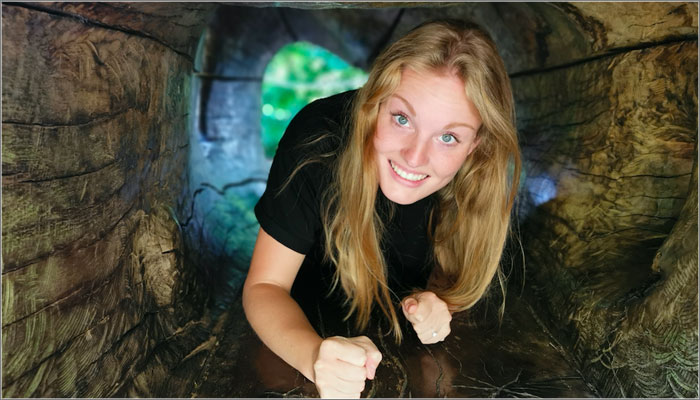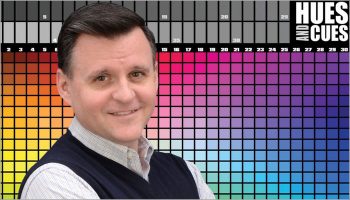Suzannah Hayes on bringing innovation to established categories

Having worked in the outdoor play space with Plum and in the educational sector with TTS, designer Suzannah Hayes has experience balancing practical necessities with blue-sky thinking.
In this interview, we dive into her approach to design, her thoughts on innovation and why she loves the collaborative nature of working in-house.
Hi Suzannah; great to connect. To kick us off, did you always want to be a toy designer?
Well I did a degree in Product Design at Nottingham Trent University, and I was always quite interested in toys and baby products. When it came to looking for a work placement in my third year, I specifically looked for playful companies.
Did you find one?
Yes, that’s when I connected with Plum Products. They didn’t have a designer at the time, so as the placement student I was the only designer, although I had help from the developers.
I absolutely loved my placement at Plum. I hadn’t been in the design industry before then, so I was nervous to find out exactly what it was like… But it was amazing!
So when you graduated, you looked mainly at the toy space?
Well when I finished my degree, I really wanted to go to Fiji and help a community out there. On the way to Fiji, I worked at the Sydney office of Plum. There I worked on artwork and POS. When I came back from Fiji, I returned to Plum’s UK office and spent two years there.
From Plum I then went to TTS Group, going from home products to designing products for schools and nurseries.
That sounds like quite a jump?
It was. Plum was mostly working with wood and metal for outdoor products, and then at TTS I worked on tooled electronics, plush, eco-plastics… Very different!
Looking at your time with Plum, how would you sum up your approach to creating outdoor products?
There’s a lot of safety rules, and I lot of fine-tuning with the factory to make sure the last nut and bolt is correct, so you have to balance the practical side of design with the blue-sky thinking. I did a lot of the initial research and brainstorming around how we could make the next best trampoline or climbing frame, and how we could make it different and innovate.
Is that quite a creative challenge? Most people have a pretty definitive idea of what a trampoline is, so how did you tackle innovating around a product like that?
Some of it is about small tweaks, like changing the kink in a leg to create product deviation and exclusives. Sometimes we really tried to push the boat out. One example that jumps out is when we tried to merge trampolines and inflatables. Instead of having a net around it, we had a huge, padded inflatable orb!
Another good example is the Discovery Nature Play Hideaway. Going from a typical V-shaped roof to a curved one is manufacturing challenge, but we wanted to play with the shapes to innovate. I also looked at different styles and colours to make sure the indoor and outdoor products were on-trend and appealed to both parents and children.

On the TTS front, you were creating educational products for schools. How did you juggle creating products that are both fun and tick the box for the educational space?
I did a lot of Open University courses in child development! I also tried to keep it all open-ended. You don’t want kids to get bored, and I love seeing children play with products in a different way to what you expect – like when they use a block as a telephone rather than stacking it. I wanted to create things that weren’t too prescriptive that could be used in lots of different ways.
I always want to design products that are enjoyable to use, and inspire the children using them, allowing them to be creative. I have spent a lot of time volunteering with children through Guiding and being a STEM Ambassador which really helps when I’m trying to think about the age and development of the child.
Is there a launch from your time at TTS that highlights how creative working in that field can be?
It’s difficult to choose, as all the projects I worked on were so different, but I really enjoyed working on a light-up range. It started with simple shapes of bricks, spheres and cylinders, but it had great colours and textures, making the range beautiful and cohesive. It was my first experience working on electronic products, it was a big learning curve but a brilliant experience.

You left TTS in December, so looking ahead, what’s next for you?
I’m doing a freelance project with Galt at the moment. I like freelance projects because you get more time on them. If you’re in-house, there is typically that time pressure which can sometimes restrict how much research you can do, and how many concepts you can develop. That said, I really enjoy working as part of a team, so I love in-house work. Collaborating with colleagues sparks so many ideas.
Before I let you go, how do you fuel your creativity?
I’m passionate about design so I’m always reading articles and looking at Pinterest. You can be inspired by things that aren’t directly relevant to your industry.
I love to play. I often go out hiking and if I find a swing or something to climb up or through, I just have to have a go!
When designing I do messy sketches, that have arrows everywhere trying to make sense of where I want the idea to go. Then I’ll usually jump onto CAD. This allows me to really establish the concept and to easily do small tweaks or create multiple versions. Creating a model and seeing how the user interacts with the product can also inspire improvements and new ideas.
Great stuff. A huge thanks again for taking time out for this Suzannah – and I should add that if anyone wants to reach out, they can find you at [email protected].
—-
To stay in the loop with the latest news, interviews and features from the world of toy and game design, sign up to our weekly newsletter here






















